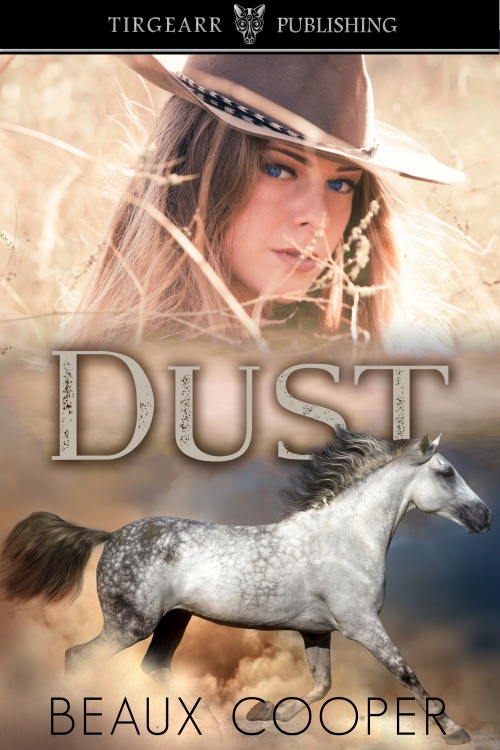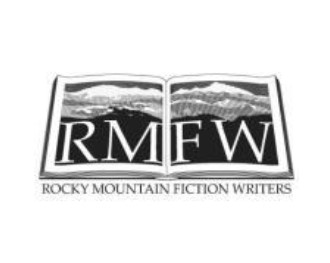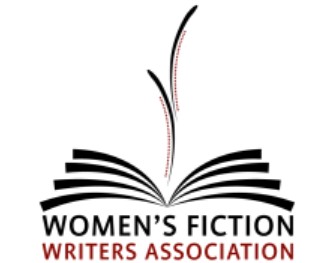I’ve had the
pleasure of traveling all around Colorado since I first moved here just over a
year ago, seeking out adventure and new experiences anywhere along the way.
I’ve walked on the Great Sand Dunes beneath the mountain peaks, overlooked the
cave dwellings in Mesa Verde, and explored the nooks and crannies of the Cave
of the Winds. Colorado has an equally rich landscape as it does history and,
admittedly, I’ve been primarily focused on the former. Estes Park and Rocky
Mountain National Park are go-to locations when I have family or friends
visiting from out of town. They always want to see the Stanley Hotel either
because it inspired the bestselling novel The
Shining by Stephen King or was used in the cinematic comedy Dumb and Dumber. I had always viewed the
Stanley Hotel as a tourist attraction rather than a piece of history, until
now.
 |
| The front of the Stanley Hotel |
The Stanley
Hotel’s origin story is conjoined with the story of the city of Estes Park to
such a degree that one could not exist as we know it without the other. Before
the first anglo-settler, Joel Estes, made his home in the valley[1],
Estes Park was popular among the Ute and Arapaho who frequently used the valley
beneath the Rockies as a hunting preserve and location for spiritual practices.[2]
Before long, the beautiful location caught the eye of Windham Thomas
Wyndham-Quin, the fourth Earl of Dunraven who wanted to turn it into a
recreational area for his wealthy friends and himself. His attempts to acquire
land as a foreign national were thwarted by the Homestead Act of 1862 where he
was forced to seek alternative means to land acquisition.[3] To
this end, he hired “roustabouts”[4]
from the Denver area to claim their homestead plot and sell their title to the
Earl. Through this round-about method, Wyndham-Quin was able to acquire 6,000
acres of land in the Estes Park valley.[5] In
order to encourage his wealthy friends to join him, he built a large hotel in
1878 aptly named the Estes Park Hotel, or more colloquially known as the
English Hotel after the origin of its creator. In 1911 a fire destroyed the
hotel leading Wyndham-Quin to sell the land to a wealthy inventor from Maine,
Freelan Oscar Stanley.[6]
F.O. Stanley was
an inventor from the very early beginnings of his life with his twin brother,
Francis Edgar, starting by creating and selling spinning tops to their friends
when they were young boys[7] to
eventually inventing a new dry-plate photography process which was later sold
to Eastman-Kodak for $500,000.[8]
The bothers did not rest on their laurels, however, regardless of the fortune
they had just landed. After selling to Eastman-Kodak, they turned their sights
on the blooming automobile industry creating the Stanley Motor Company where
they invented the Stanley Steamer, a steam powered cars. Their vehicle was so
successful it even beat the world’s land speed record in 1906.[9]
When Stanley was diagnosed with tuberculosis in 1903 at the age of 53 he
located a doctor in Denver and ventured west from Maine and fell in love with
the Estes Park valley. This lead to the purchase of land from Wyndham-Quin and,
eventually, the construction of his 5,300 square feet summer home so that he and
his wife, Flora, could spend the warm summer months in Estes Park and the
winter months in his home state.[10]
 |
| The view from the front porch. |
It only took a few
summers in Estes Park for Stanley to decide he wanted to share the beauty of
the valley with his friends back home. To cater to this wealthy New England
crowd, Stanley put into motion the project of creating an entire compound for
which his hotel would be the crowning jewel. Construction of eleven buildings
began in 1907 with 300 men working “around the clock” to achieve a finished
hotel in only two years.[11] All
it was missing was a name. As a nod to the area’s history, Stanley thought to
name the hotel the Dunraven after the Earl who sold him the land, but the
townsfolk disagreed. They did not like that the Earl wanted to turn the area
into a private preserve for just the wealthy and so encouraged Stanley to name
the compound after himself.[12] The
hotel was modeled after the great hotels on the East Coast in an architecture
style known as Georgian Colonial Revival[13]
making sure that the buildings were a sliver of luxury tucked within the Rocky
Mountains; an elegant structure overlooking a town of rickety wood buildings.
However, with luxury comes a need for infrastructure and support from the
community. To support his hotel, Stanley invested greatly into Estes Park. He
built a hydro-plant on Fall River so that the hotel would be completely run on
electricity, a sewer system, and 9-hole golf course.[14]
He went on to donate land for the purpose of building a landfill, school, and
park for the community and was greatly involved in helping incorporate the
first bank in Estes Park as well as use his influence to have the Rocky
Mountain National Park created.[15]
This ultimately provided employment through tourism for the small community
creating a population boom in the summer months. With no railroad line leading
into Estes Park, Stanley created what he called the auto-stage service which
brought visitors from the nearest train depot in Lyons to Estes Park.[16] Guests
at The Stanley Hotel often stayed for long periods of time ranging anywhere
from a month to the full three months of summer bringing not only their
families, but their household staff with them.
By the time
Stanley reached his 70’s in the early 1920s, he was ready to sell his hotel. The
short tourism season coupled with the expense of maintaining the hotel, its
fate would be in constant question over the course of the next 50 years. That
is, until one day a curious, struggling author decided to spend the night in
October of 1974.[17] Inspired by the solitude
of its location and the depth of its history, Stephen King brought life to The Shining. Perhaps by mere
coincidence, it is around this time that the ghosts started to make their first
appearances. The novel and eventual film was not enough to save the hotel from
bankruptcy in 1995 when its current, and longest lasting owner, John Cullen won
it in an auction when he was only 29 years old.[18]
Through his ownership The Stanley Hotel has developed into a mecca for horror
fans and the arts. Now hosting concerts, films, ghost tours, and festivals to
drive in tourists, the hotel seems to be thriving and full of life.[19]
The way that
Stanley is described by local historians and even The Stanley Hotel’s resident
psychic, Madame Vera, is incongruent with the image I had of him in my
imagination. He was a gentleman who was “always dressed to the nines”[20]
and had a “good heart for people and especially children.”[21]
He appears to have been a jovial, intelligent man who simply wanted to share
the beauty of Estes Park and the Rocky Mountain National Park with others who
could appreciate it, The Stanley Hotel acting as his legacy for generations to
come long after he was gone. This character portrait of Stanley changes my
perspective on this historical site and actually aligns with the feeling I get
from the buildings and surrounding area. While my friends and family have
always enjoyed the spookiness of the campus, it never struck me as feeling
haunted. The lobby and surrounding ballrooms are quiet and intimate. There is
almost a feeling of dust in the air as if you are transported back to the
bustling era in which the building was first erected. The grounds are equally
quiet and though well-manicured, still have a feeling of being wild and free.
Even now, in modern times, The Stanley Hotel feels like a place to seek refuge
from the outside world. A place to rest and repair, just as its creator had
intended it to be.
Bibliography
Britannica,
The Editors of Encyclopaedia. "Francis Edgar Stanley and Freelan O.
Stanley." Encyclopædia Britannica. March 21, 2016. Accessed September 23,
2018. https://www.britannica.com/biography/Stanley-Francis-Edgar-and-Stanley-Freelan-O.
"Historic
Stanley Estes Park Hotel." The Stanley Hotel. Accessed September 20,
2018. https://www.stanleyhotel.com/.
"HISTORY
OF THE TOWN OF ESTES PARK." History of the Town of Estes Park, Colorado.
Accessed September 23, 2018. https://www.visitestespark.com/estes-park-centennial/estes-park-history/.
J.
Speer (Writer), J. Speer (Director). (2016). Colorado Experience: The Stanley Hotel [Motion Picture]. Retrieved
from https://www.pbs.org/video/colorado-experience-stanley-hotel/
"Stanley
Home Foundation." The Historic Stanley Home Foundation. Accessed September
20, 2018. http://www.historicstanleyhome.org/the-stanleys/.
[1] "HISTORY OF THE TOWN OF ESTES PARK." History
of the Town of Estes Park, Colorado. Accessed September 23, 2018.
https://www.visitestespark.com/estes-park-centennial/estes-park-history/.
[2] Ibid
[3] J. Speer
(Writer), J. Speer (Director). (2016). Colorado Experience: The Stanley Hotel
[Motion Picture]. Retrieved from
https://www.pbs.org/video/colorado-experience-stanley-hotel/
[4] Ibid
[5] Ibid
[6] Ibid
[7] Britannica, The Editors of Encyclopaedia.
"Francis Edgar Stanley and Freelan O. Stanley." Encyclopædia
Britannica. March 21, 2016. Accessed September 23, 2018.
https://www.britannica.com/biography/Stanley-Francis-Edgar-and-Stanley-Freelan-O.
[8] J. Speer
(Writer), J. Speer (Director). (2016). Colorado Experience: The Stanley Hotel
[Motion Picture]. Retrieved from
https://www.pbs.org/video/colorado-experience-stanley-hotel/
[9] Britannica, The Editors of Encyclopaedia.
"Francis Edgar Stanley and Freelan O. Stanley." Encyclopædia
Britannica. March 21, 2016. Accessed September 23, 2018.
https://www.britannica.com/biography/Stanley-Francis-Edgar-and-Stanley-Freelan-O.
[10] J. Speer
(Writer), J. Speer (Director). (2016). Colorado Experience: The Stanley Hotel
[Motion Picture]. Retrieved from https://www.pbs.org/video/colorado-experience-stanley-hotel/
[11] Ibid
[12] Ibid
[13] "Stanley Home Foundation." The Historic
Stanley Home Foundation. Accessed September 20, 2018.
http://www.historicstanleyhome.org/the-stanleys/.
[14] J. Speer
(Writer), J. Speer (Director). (2016). Colorado Experience: The Stanley Hotel
[Motion Picture]. Retrieved from
https://www.pbs.org/video/colorado-experience-stanley-hotel/
[15] Ibid
[16] Ibid
[17] Ibid
[18] Ibid
[19] "Historic Stanley Estes Park Hotel." The
Stanley Hotel. Accessed September 20, 2018. https://www.stanleyhotel.com/.
[20]
J.
Speer (Writer), J. Speer (Director). (2016). Colorado Experience: The Stanley
Hotel [Motion Picture]. Retrieved from
https://www.pbs.org/video/colorado-experience-stanley-hotel/
[21]
Ibid











